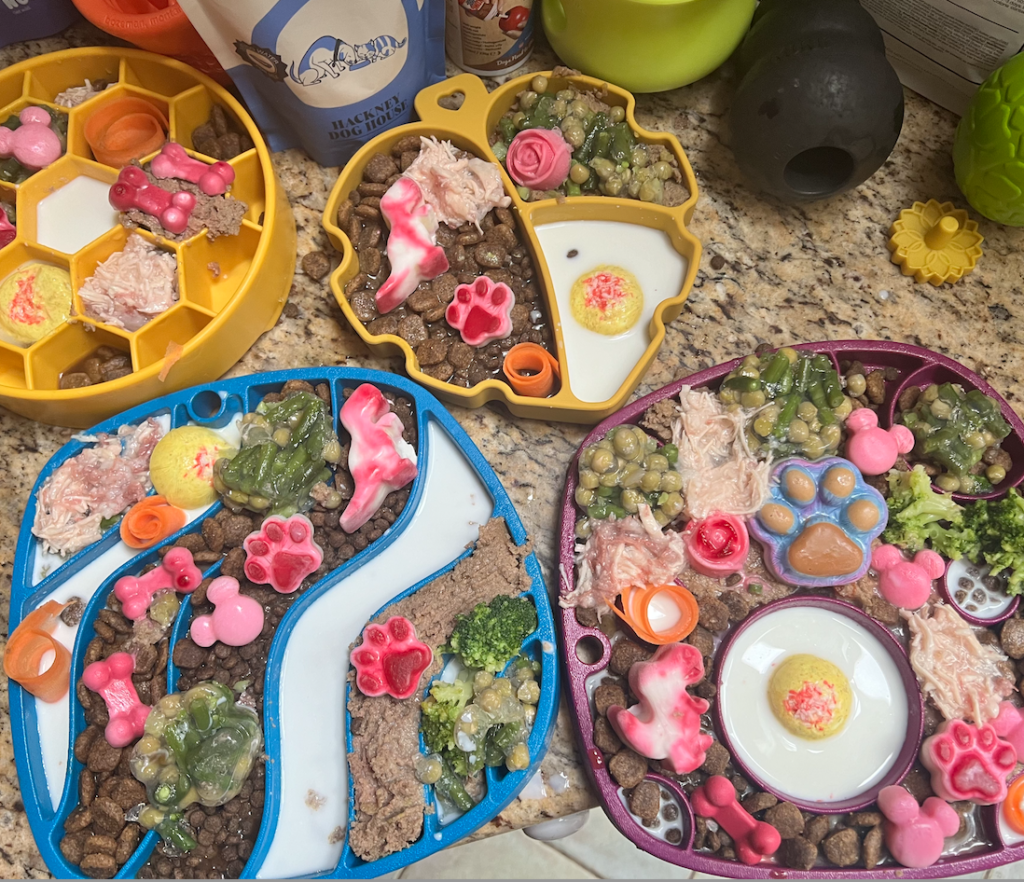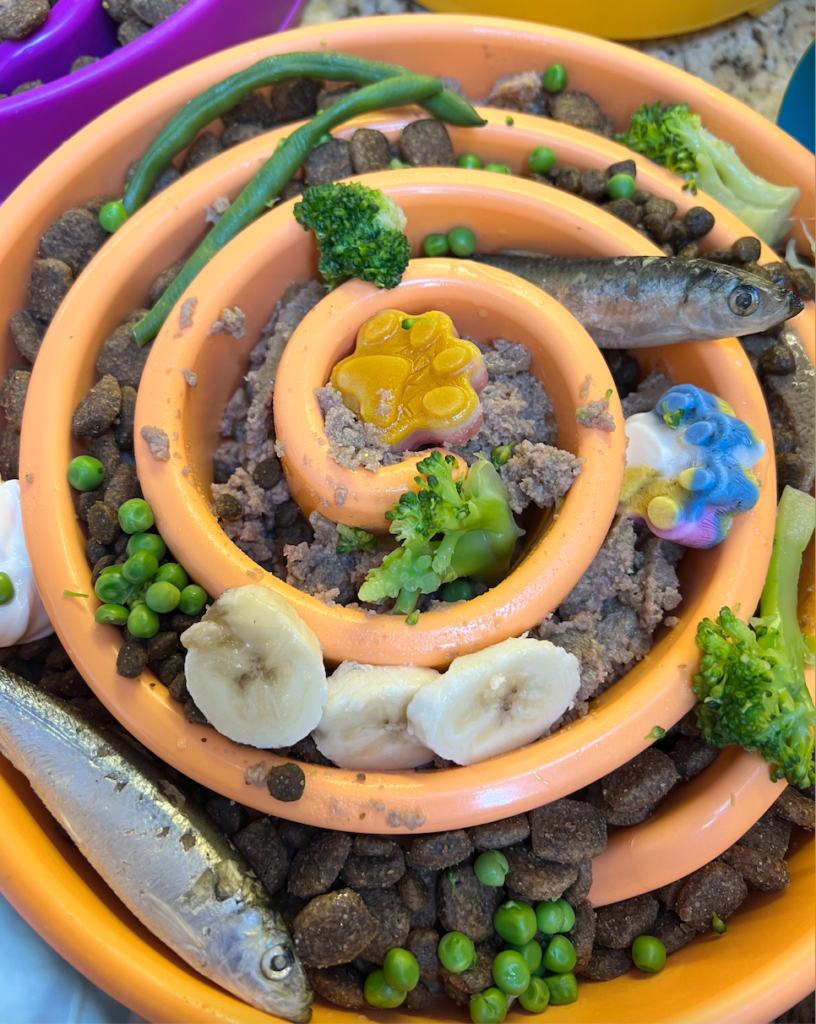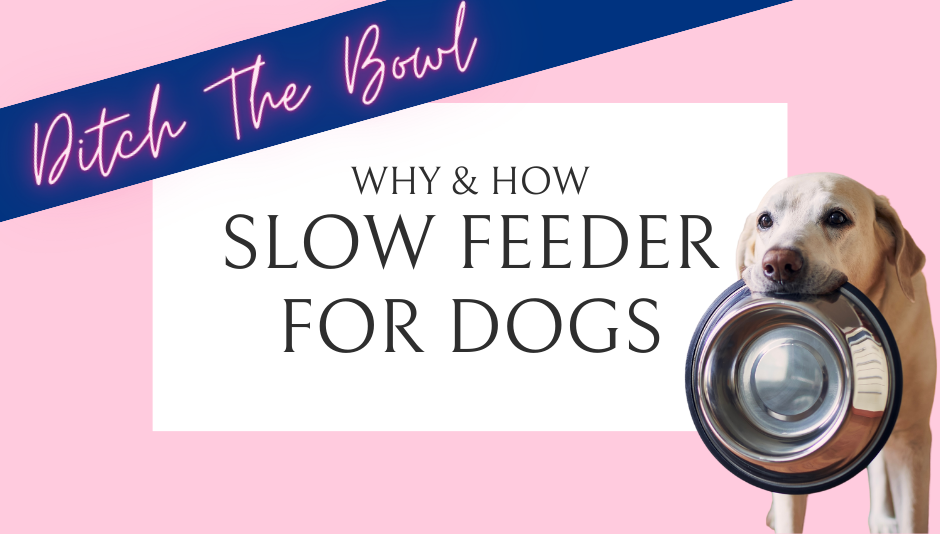Feeding your dog is an important aspect of their health and well-being. However, eating too quickly can lead to a range of problems, including choking, gagging, vomiting, and even life-threatening conditions such as bloat. Slow feeders can help your dog to eat at a safer pace, and also provide a fun and interactive feeding experience that can enhance their mental and physical well-being.
Disclosure: This post may contain affiliate links, meaning we may earn a small commission if you make a purchase through these links, at no additional cost to you. Your support helps us continue to provide valuable content to our readers. Thank you!
Why Use a Slow Feeder Dog Bowl
Slow feeder dog bowls can help to slow down your dog’s eating pace, which can reduce the risk of choking, gagging, vomiting, and bloat. They can also provide a fun and engaging feeding experience that can stimulate your dog’s mind and prevent boredom. Slow feeder can also help to promote dental health by providing a natural abrasive action on your dog’s teeth, which can help to remove plaque and tartar.
Slow feeding dogs and using slow feeders offer a variety of benefits for their health and well-being. Here are some key advantages:
- Improved Digestion: Eating too quickly can cause dogs to swallow a lot of air along with their food, leading to gastrointestinal issues such as bloating, gas, and discomfort. Slow feeders encourage dogs to eat more slowly, which can help to prevent these issues and promote better digestion.
- Reduced Risk of Bloat: Bloat, or gastric dilatation-volvulus (GDV), is a serious and potentially fatal condition that can occur when dogs eat too quickly. Slow feeders can help reduce the risk of bloat by ensuring dogs take their time eating and do not ingest large amounts of air.
- Weight Management: Slow feeding can help with weight management by preventing overeating. Dogs that eat too quickly may not give their stomachs enough time to signal to their brains that they are full, leading to overeating and weight gain. Slow feeders help dogs feel fuller on less food.
- Mental Stimulation: Slow feeders often have puzzle-like designs that can provide mental stimulation for dogs. This can help keep them engaged and mentally active, which is particularly beneficial for dogs that spend a lot of time alone or do not get enough mental exercise.
- Prevent Choking: Dogs that eat too quickly are at a higher risk of choking. Slow feeders can help mitigate this risk by forcing dogs to eat more slowly and chew their food thoroughly.
- Improved Dental Health: Slow feeders can encourage dogs to chew their food more, which can help in scraping off plaque and tartar from their teeth, promoting better dental health.
- Behavioural Benefits: For some dogs, mealtime can be a source of stress or anxiety, leading to aggressive or anxious behaviours. Slow feeders can help your dog eat more calmly, encourage natural innate behaviours like scavenging, reducing stress and promoting more relaxed behaviour around food.
- Better Nutrient Absorption: Eating more slowly allows dogs to better break down and absorb nutrients from their food, leading to improved overall health and well-being.
By incorporating slow feeders into your dog’s routine, you can support their physical health, provide mental enrichment, and promote positive eating behaviours.
Types of Slow Feeder for Dogs
There are many types of slow feeder for dogs available on the market, including puzzle feeders, maze bowls, and interactive food dispensers. Puzzle feeders are designed to challenge your dog’s problem-solving skills, while maze bowls have raised ridges or partitions that create obstacles to slow down your dog’s eating pace. Interactive food dispensers require your dog to push, paw, or manipulate the feeder in order to dispense the food.
Here are some of the slow feeders we use on a daily basis:


Sodapup Honey Comb Slow Feeder
Leaf Slow Feeder
West Paw Feast Mats Bubble and Wave
Purple Fun Feeder
Orange Fun Feeder for an overview of other feeders, lick mats and enrichment toys we use, click here.
Related: How to Choose the Right Slow Feeder Dog Bowl and Enrichment Toys for your Dog
Shopping Guide Enrichment Feeders |
How to Use a Slow Feeder
When introducing a slow feeder to your dog, it’s important to supervise them to ensure they are using it correctly and not becoming frustrated or overwhelmed. Start by offering a small amount of food in the slow feeder, and gradually increase the amount as your dog becomes more comfortable with the device. You can also use treats or wet food in the slow feeder to make it more enticing and rewarding for your dog. It’s important to clean the slow feeder regularly to prevent bacterial growth and ensure hygiene.
Slow feeders can be a great addition to your dog’s feeding routine, providing both physical and mental enrichment. They can help to slow down your dog’s eating pace, promote dental health, and stimulate their mind. With the right introduction and supervision, slow feeders can provide a fun and rewarding feeding experience for your furry friend.



